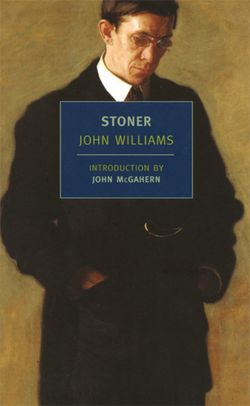Arifa Akbar in The Independent:
 When the American academic and novelist John Edward Williams published his third novel, in 1965, it was greeted with a respectful, albeit muted, reception by the literary press. The New York Times gave Stoner, the story of an ordinary American man making his way in the world, a favourable enough write-up, while The New Yorker mentioned it in worthy terms in its “briefly noted” column. No other waves were made. After selling a grand total of 2,000 copies, Stoner seemed to suffer the unenviable fate of being respectfully shelved as that “quiet American novel”. Until now, that is. The “quiet” American classic has become something of a slow-burn sensation. Nearly two decades after its author’s death in 1994, Stoner is hitting Europe’s bestseller lists, and causing a stir in Britain and America. The unexpected and widespread reappraisal has earned the epithet “the Stoner phenomenon”.
When the American academic and novelist John Edward Williams published his third novel, in 1965, it was greeted with a respectful, albeit muted, reception by the literary press. The New York Times gave Stoner, the story of an ordinary American man making his way in the world, a favourable enough write-up, while The New Yorker mentioned it in worthy terms in its “briefly noted” column. No other waves were made. After selling a grand total of 2,000 copies, Stoner seemed to suffer the unenviable fate of being respectfully shelved as that “quiet American novel”. Until now, that is. The “quiet” American classic has become something of a slow-burn sensation. Nearly two decades after its author’s death in 1994, Stoner is hitting Europe’s bestseller lists, and causing a stir in Britain and America. The unexpected and widespread reappraisal has earned the epithet “the Stoner phenomenon”.
…The novel’s hero, William Stoner, begins life on a farm but falls in love with literature and becomes an English literature professor at a Midwestern university – much like Williams himself, who was a novelist and university professor for most of his life (winning the National Book Award for his last novel, Augustus). Stoner’s career is largely uneventful, and his marriage is largely unhappy. That this is deliberately the story of an unremarkable man is stated in the opening lines: “William Stoner entered the University of Missouri as a freshman in the year 1910, at the age of nineteen. Eight years later, during the height of World War I, he received his Doctor of Philosophy degree and accepted an instructorship at the same University, where he taught until his death in 1956. He did not rise above the rank of assistant professor, and few students remembered him with any sharpness after they had taken his courses.”
Despite its seeming “smallness”, the novel is filled with life’s most profound moments and passions.
When the American academic and novelist John Edward Williams published his third novel, in 1965, it was greeted with a respectful, albeit muted, reception by the literary press. The New York Times gave Stoner, the story of an ordinary American man making his way in the world, a favourable enough write-up, while The New Yorker mentioned it in worthy terms in its “briefly noted” column. No other waves were made. After selling a grand total of 2,000 copies, Stoner seemed to suffer the unenviable fate of being respectfully shelved as that “quiet American novel”. Until now, that is. The “quiet” American classic has become something of a slow-burn sensation. Nearly two decades after its author’s death in 1994, Stoner is hitting Europe’s bestseller lists, and causing a stir in Britain and America. The unexpected and widespread reappraisal has earned the epithet “the Stoner phenomenon”.
